
Guests
- Diane Farsettasenior researcher at the Center for Media and Democracy.
A new study by the Center for Media and Democracy says Americans are still being shown corporate public relations videos disguised as news reports on newscasts across the country. In April, the center identified 77 stations using video news releases in their newscasts. The findings led to an investigation by the FCC. A follow-up study has found 10 of those stations are still airing VNRs today for a total of 46 stations in 22 states. [includes rush transcript]
Transcript
AMY GOODMAN: Corporate propaganda on the 6:00 news—a new study by the Center for Media and Democracy says Americans are still being shown public relations videos disguised as news reports on newscasts across the country. The fake reports are called video news releases, or VNRs. They’re produced by marketing firms hired to promote products or political messages.
If this story sounds familiar, it’s because dozens of stations have already been caught in the act. As reported on Democracy Now! in a broadcast exclusive in April, the Center for Media and Democracy identified 77 stations using VNRs in their newscasts. The findings led to an investigation by the Federal Communications Commission.
Well, despite the controversy, 10 of those stations are still airing VNRs today, for a total of 46 stations in 22 states. Most of the VNRs have aired on stations owned by large media conglomerates, such as News Corp. or Tribune and Disney. They’ve also been sponsored by some of the country’s biggest corporations, including General Motors, GlaxoSmithKline and Allstate Insurance.
In all but six cases, the television stations failed to identify where the VNRs came from. In 12 cases, television stations even edited out disclosures included in the original fake report. And in four cases, the television stations failed to disclose the reporters on the screen were actually publicists.
We’re going to speak with one of the authors of the report in a minute. But first, let’s take a look at one of the VNRs that made it to air. In June of this year, the PR firm Medialink Worldwide put out a VNR that sought to disprove the link between global warming and hurricanes.
KATE BROOKES: You’ve seen it before: winds, floods, the devastation left after a massive hurricane passes through. There’s a lot of debate as to what’s been causing all of these hurricanes. Some scientists say it’s part of a naturally occurring cycle, while others have made the claim global warming is to blame. Dr. William Gray and Dr. James O’Brien, two of the nation’s top weather and [inaudible], point to scientific data for the answer.
DR. WILLIAM GRAY: We only have good data with a satellite around the globe, going back about 20 years. And in those 20 years, we see no significant change in the frequency and intensity of hurricanes or major hurricanes around the globe.
KATE BROOKES: Gray and many of his colleagues believe it’s not global warming that’s creating these massive hurricanes, but the cycle of nature itself.
DR. WILLIAM GRAY: Since it’s changed, there’s been a lot of people saying, “Aha, the globe is warming. This is a cause of these last two years’ storms.” Well, we don’t think that’s the case. Whether this is a way nature sometimes works.
KATE BROOKES: It’s these changes in the Atlantic salt content and currents that Gray says causes most of the hurricanes on the East and Gulf Coasts. This year the probability of a major hurricane is about 81 percent. And while this number is a prediction, it’s based on science and research, so it never hurts to be prepared. I’m Kate Brookes.
AMY GOODMAN: This VNR was produced for the firm TCS Daily Science Roundtable. Until last month, TCS was owned by the Republican lobbyist, DCI Group. TCS was also the recipient of a $95,000 grant from the oil giant ExxonMobil for, quote, “climate change support.” But when ABC affiliate WTOK-11 in Meridian, Mississippi, aired the VNR in May, none of these details were mentioned. Instead, viewers were shown an edited version of the VNR with the station’s news anchor reading the same script.
WTOK-11 ANCHOR: Hurricane seasons for the next 20 years could be severe, but don’t blame global warming. One of the nation’s foremost hurricane predictors is Dr. William Gray, the famed Colorado State University hurricane predictor. He says the earth’s natural cycles are to blame for the increase in activity.
DR. WILLIAM GRAY: Since it’s changed, there’s been a lot of people saying, “Aha, the globe is warming. This is a cause of these last two years’ storms.” Well, we don’t think that’s the case. Whether this is a way nature sometimes works.
WTOK-11 ANCHOR: Gray makes predictions for the upcoming hurricane season every year before it begins.
AMY GOODMAN: That was from ABC affiliate WTOK-11 in Meridian, Mississippi, in May. We asked a representative of the station to come on our program, but we didn’t get a response. Another 15 stations either turned down our request or didn’t respond.
We did hear back from a few stations. Fred D’Ambrosi, news director at the San Diego CBS affiliate KFMB-TV, responded to our request about a VNR that failed to disclose the so-called reporter was actually a publicist hired by General Mills. D’Ambrosi says the fake report aired by mistake and that he doesn’t think VNRs should air at all without proper disclosure.
We also called the Radio-Television News Directors Association. They’re called the RTNDA. They sent a petition to the FCC last month urging them to halt their investigation into VNRs. They declined our request to join us on the program today.
Well, Diane Farsetta did agree to come on. She joins us from Washington, D.C. She’s co-author of the Center for Media and Democracy, the study called “Still Not the News: Stations Overwhelmingly Fail to Disclose VNRs.” The report comes out today. Welcome, Diane Farsetta, to this follow-up to your first report. Explain now what you have found.
DIANE FARSETTA: Well, basically, what we have found is that this practice of airing VNRs without any disclosure continues. In some ways, it’s more of the same. In some ways, it’s worse than what our first report documented. As you mentioned, there are 10 stations that are repeats from the first report. Eight of those, in their more recent VNRs, offered no disclosure whatsoever. So, to make clear, these are eight stations that are currently under investigation by the FCC. So, all told, there are 54 different instances that this report documents newscasts airing, incorporating VNRs, overwhelmingly without any disclosure to their audiences.
AMY GOODMAN: Now, Diane, you’ve been accused by, for example, the RTNDA, which is a very important organization for news directors around the country—it’s the Radio-Television News Directors Association—saying you’re trying to pull the government into determining the content on their networks, on their programs, on their stations.
DIANE FARSETTA: Right. Well, I mean, we think it’s so ridiculous that—that those sorts of claims are ridiculous for many different reasons. First of all, when we’re talking about VNR disclosure, we’re talking about something—an important piece of information that’s being denied to news audiences that they need to be able to evaluate these claims that are being presented. The global warming example that you showed is a great example of, if only that information had been presented, that this was presented by ExxonMobil’s lobbying firm, you would take that information, you would evaluate it much differently. So, the aim of disclosure is not to suppress VNRs. It’s not to say TV stations can’t air these. It’s to provide an essential piece of information to news audiences. So, we think there’s not really any basis for First Amendment opposition to VNR disclosure, not to mention that TV stations are given free use of the public airwaves, and they’re supposed to be serving the public interest.
AMY GOODMAN: I want to go to another example. This is an original video news release, VNR, produced by the PR firm Medialink Worldwide for its client, Siemens Oncology. The piece was created to advertise a medical device called MVision. The video features Medialink publicist Kate Brookes acting as a reporter.
KATE BROOKES: At 81 years old, Frederic Linder is looking forward to watching his new grandson grow up, and when the time comes, teaching him Hamlet. But first, he’s hoping to beat prostate cancer. He’s currently undergoing radiation therapy at the UCSF Comprehensive Cancer Center.
FREDERIC LINDER: I feel absolutely nothing. I have no side effects. In fact, from here, I usually go to the Y to work out a little bit.
KATE BROOKES: Linder’s physicians are treating him with the help of a new tumor imaging technology.
ANDREAS SCHLATTER, Siemens Oncology: MVision is a new technology allowing the radiation therapist to create three dimensional images of the patient, when the patient is at the treatment table just prior to the radiation therapy treatment.
KATE BROOKES: The significance? Doctors can now see and pinpoint the exact area they’re attempting to treat. Traditional two-dimensional views, doctors say, leave much more to chance.
DR. JEAN POULIOT: So, all of a sudden, just before you treat your patient, you have access to the entire anatomy in 3-D to validate the positioning and the setup of the patient. So, there’s a high confidence that when we shoot the beam, when we use the beam for dose delivery, it really is where we intend it to be.
AMY GOODMAN: On August 22, 2006, ABC affiliate KSFY-13 in Sioux Falls, Iowa, aired the VNR in its entirety. In their introduction, a local anchor made it appear the publicist, Kate Brookes, was actually a reporter.
KSFY-13 ANCHOR: New technology may help revolutionize cancer treatment for more than a million patients diagnosed with the disease this year alone. As Kate Brookes explains, recent advances are helping doctors to treat tumors faster, safer and more precisely.
KATE BROOKES: At 81 years old, Frederic Linder is looking forward to watching his new grandson grow up, and when the time comes, teaching him Hamlet. But first, he’s hoping to beat prostate cancer. He’s currently undergoing radiation therapy at the UCSF Comprehensive Cancer Center.
FREDERIC LINDER: I feel absolutely nothing. I have no side effects. In fact, from here, I usually go to the Y to work out a little bit.
KATE BROOKES: Linder’s physicians are treating him with the help of a new tumor imaging technology.
ANDREAS SCHLATTER, Siemens Oncology: MVision is a new technology allowing the radiation therapist to create three dimensional images of the patient, when the patient is at the treatment table just prior to the radiation therapy treatment.
KATE BROOKES: The significance? Doctors can now see and pinpoint the exact area they’re attempting to treat. Traditional two-dimensional views, doctors say, leave much more to chance.
DR. JEAN POULIOT: So, all of a sudden, just before you treat your patient, you have access to the entire anatomy in 3-D to validate the positioning and the setup of the patient. So, there’s a high confidence that when we shoot the beam, when we use the beam for dose delivery, it really is where we intend it to be.
AMY GOODMAN: An excerpt of the VNR that aired on a KSFY newscast in South Dakota in August. A spokesperson for KSFY declined to be interviewed for our broadcast, but did say the station had mistakenly failed to properly identify the piece as a VNR. Well, your final response, Diane Farsetta?
I want to say that the National Association of Broadcast Communicators, a consortium of broadcast PR firms that produce VNRs, did issue a statement, along with the Public Relations Society of America, about your original report. They say the report, quote, “seriously distorts the FCC rules concerning VNRs and creates the false impression that numerous broadcast stations across the country are violating FCC rules.” We invited both of them on the program, of these organizations. They failed to—they both declined our request. I’m sorry about that. But your final response to them?
DIANE FARSETTA: Sure, I would say viewers can go to stopfakenews.org, and they can watch the report. They can read it. As far as our take on the FCC regulations, everything that we have in both of our reports are direct quotes from the FCC’s own statements, the public notice that they issued in April 2005 on video news releases, which says stations generally must clearly disclose when they air video news releases.
AMY GOODMAN: Diane, finally, you’re holding a news conference today?
DIANE FARSETTA: We are. And Commissioners Copps and Adelstein will be joining us for that. So, we will have more discussion about policy.
AMY GOODMAN: And we will link to that on our website at democracynow.org. Diane Farsetta, senior researcher at the Center for Media and Democracy, co-author of “Still Not the News: Stations Overwhelmingly Fail to Disclose VNRs.”

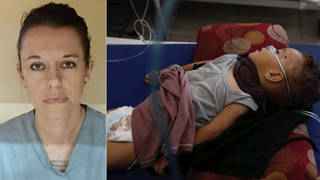
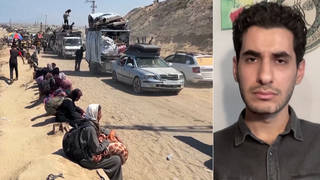
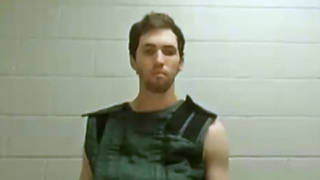
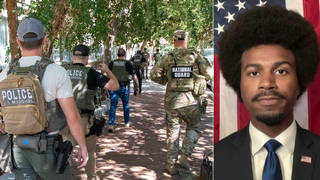
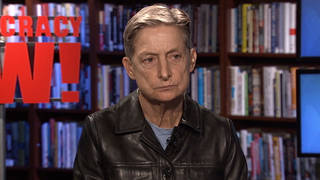
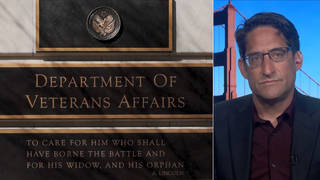
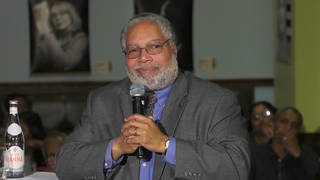
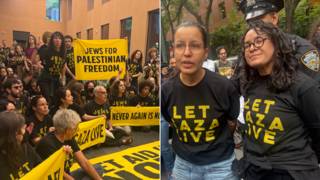

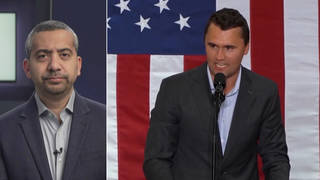
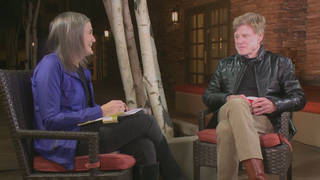
Media Options